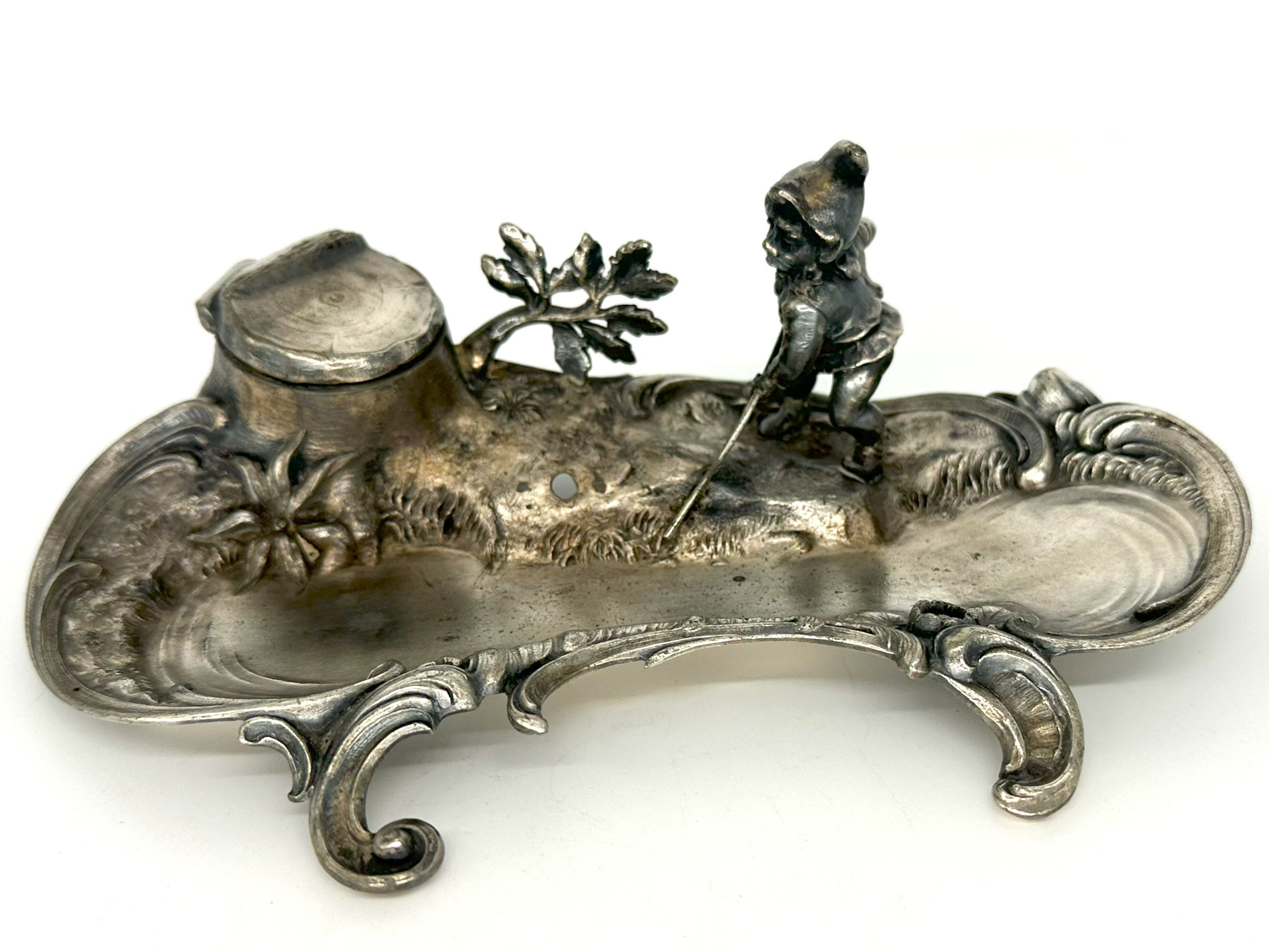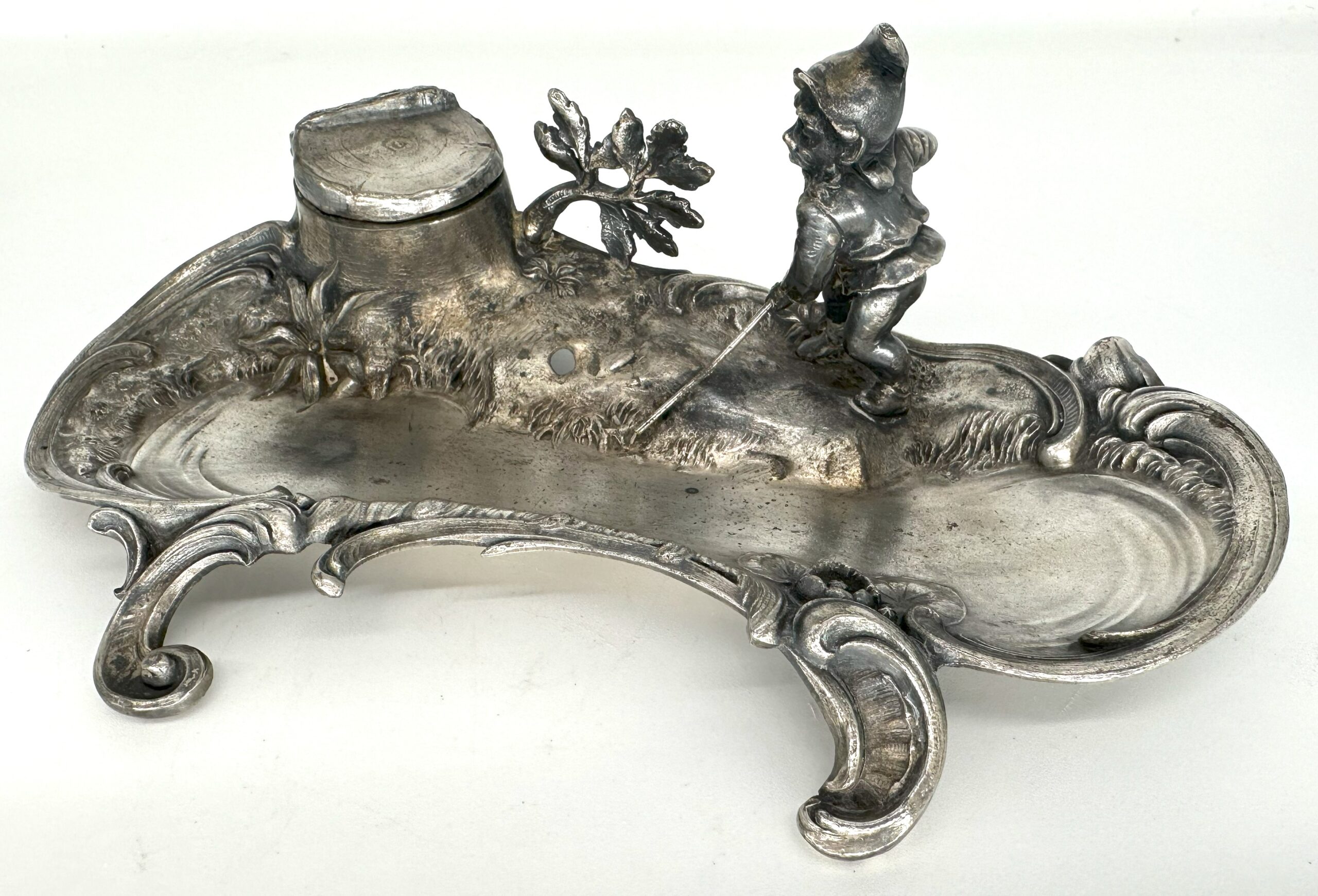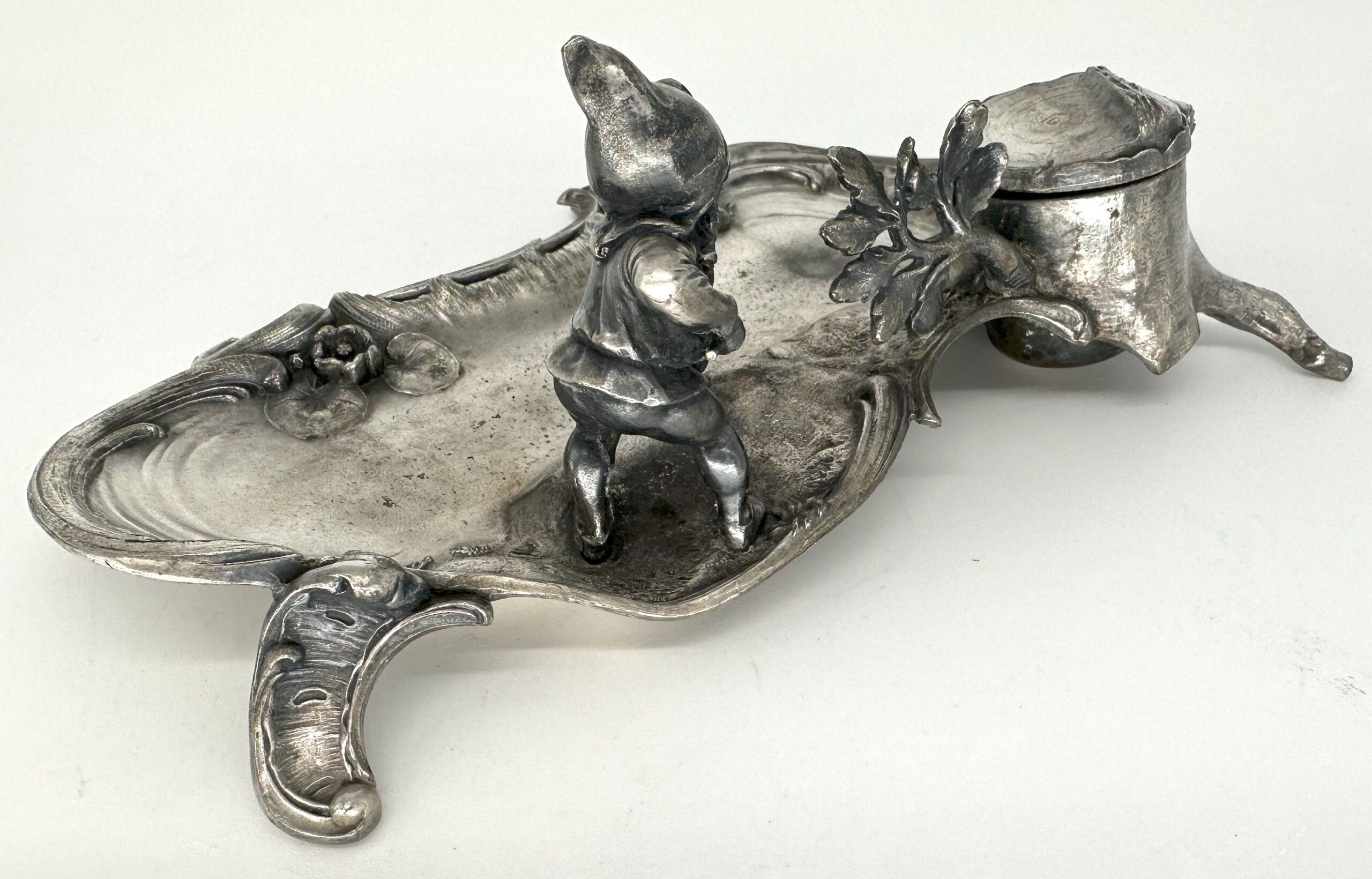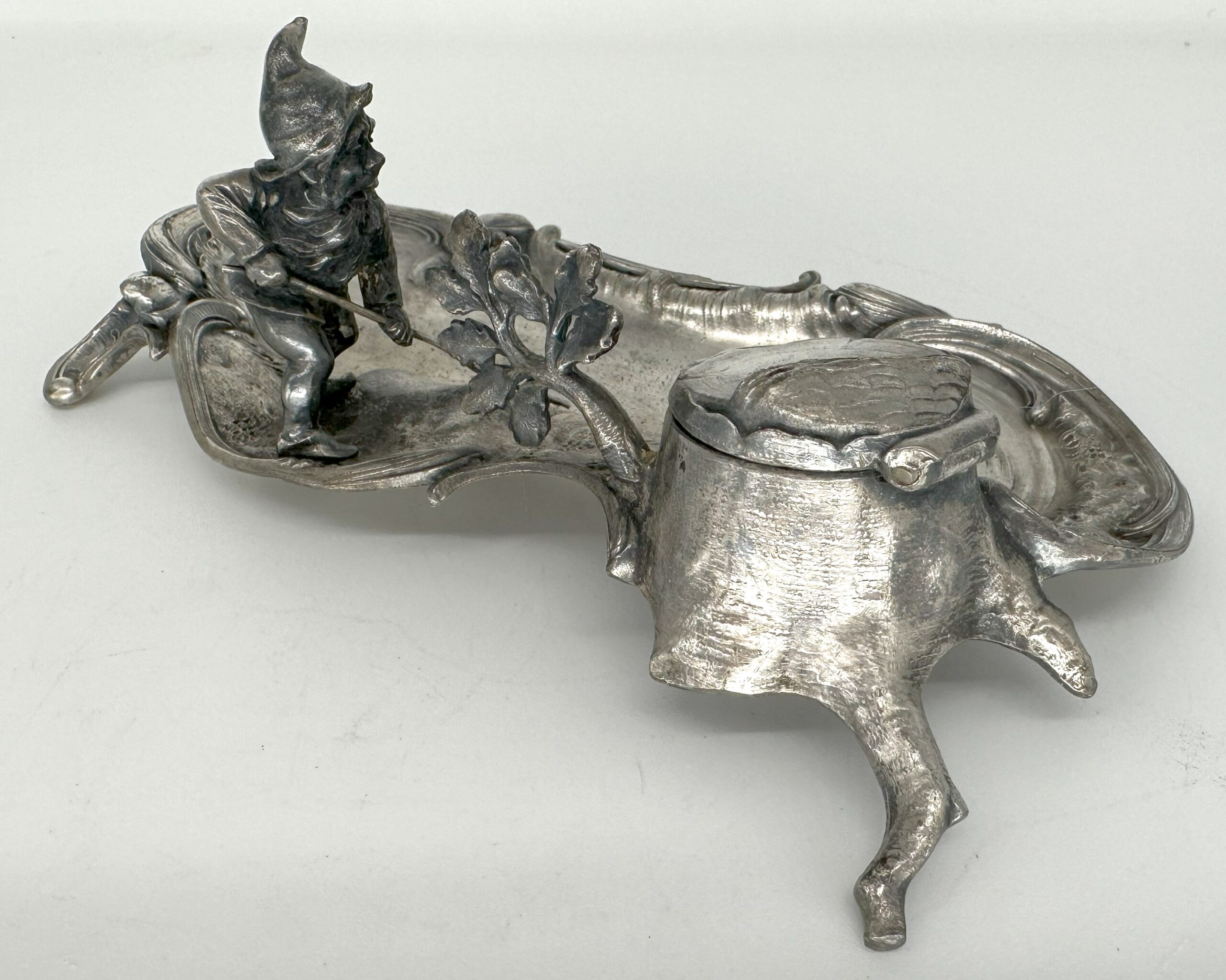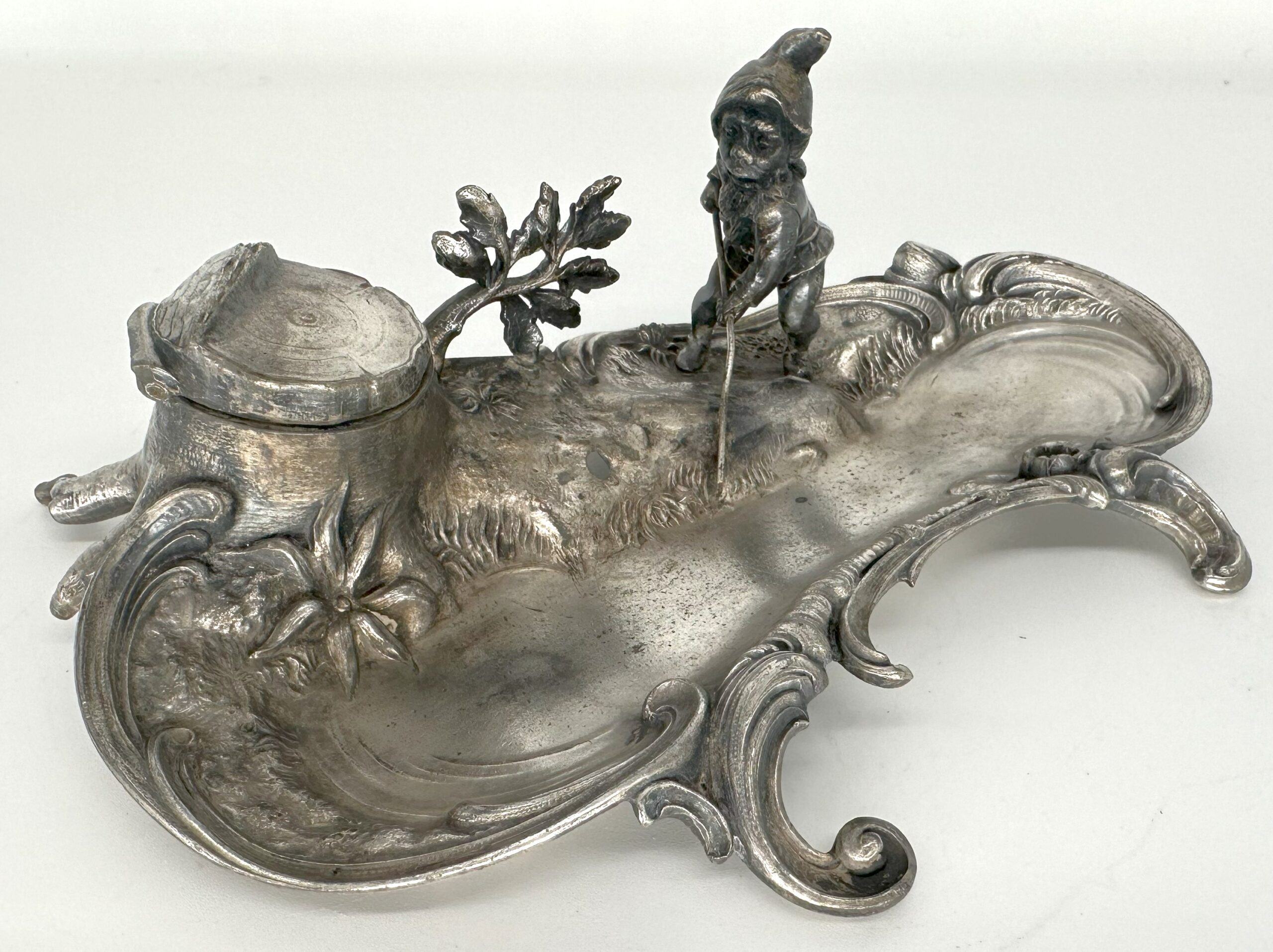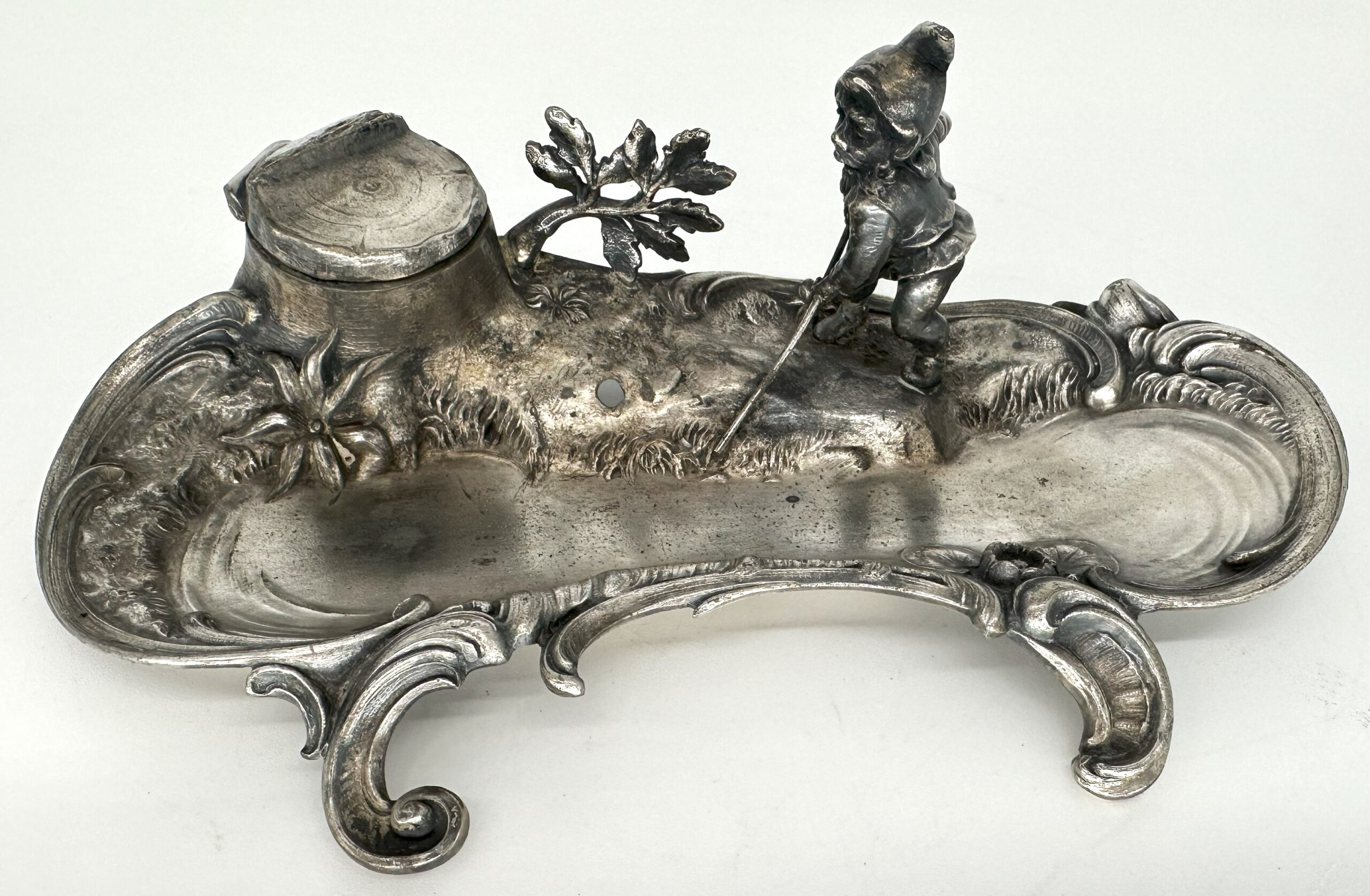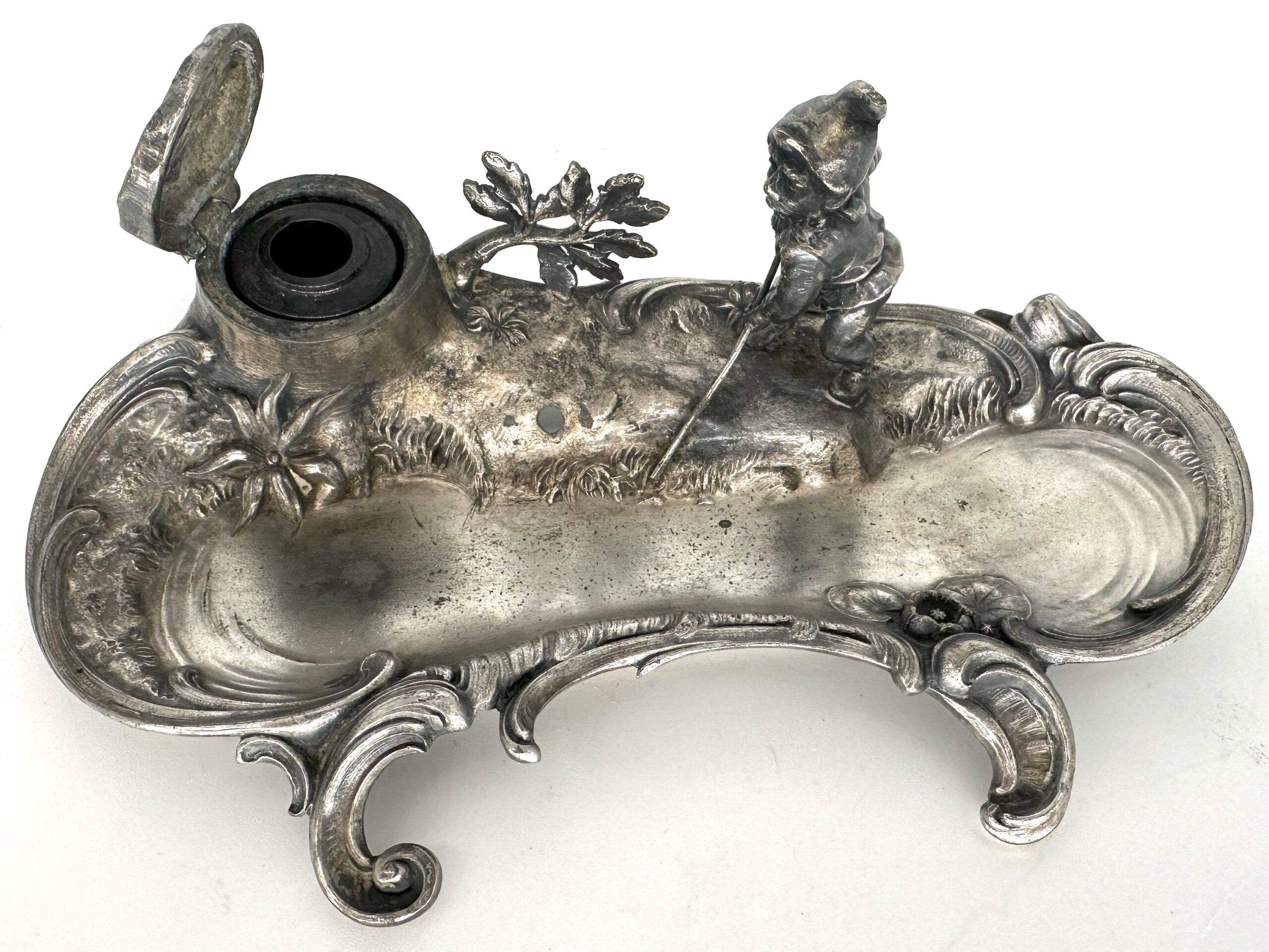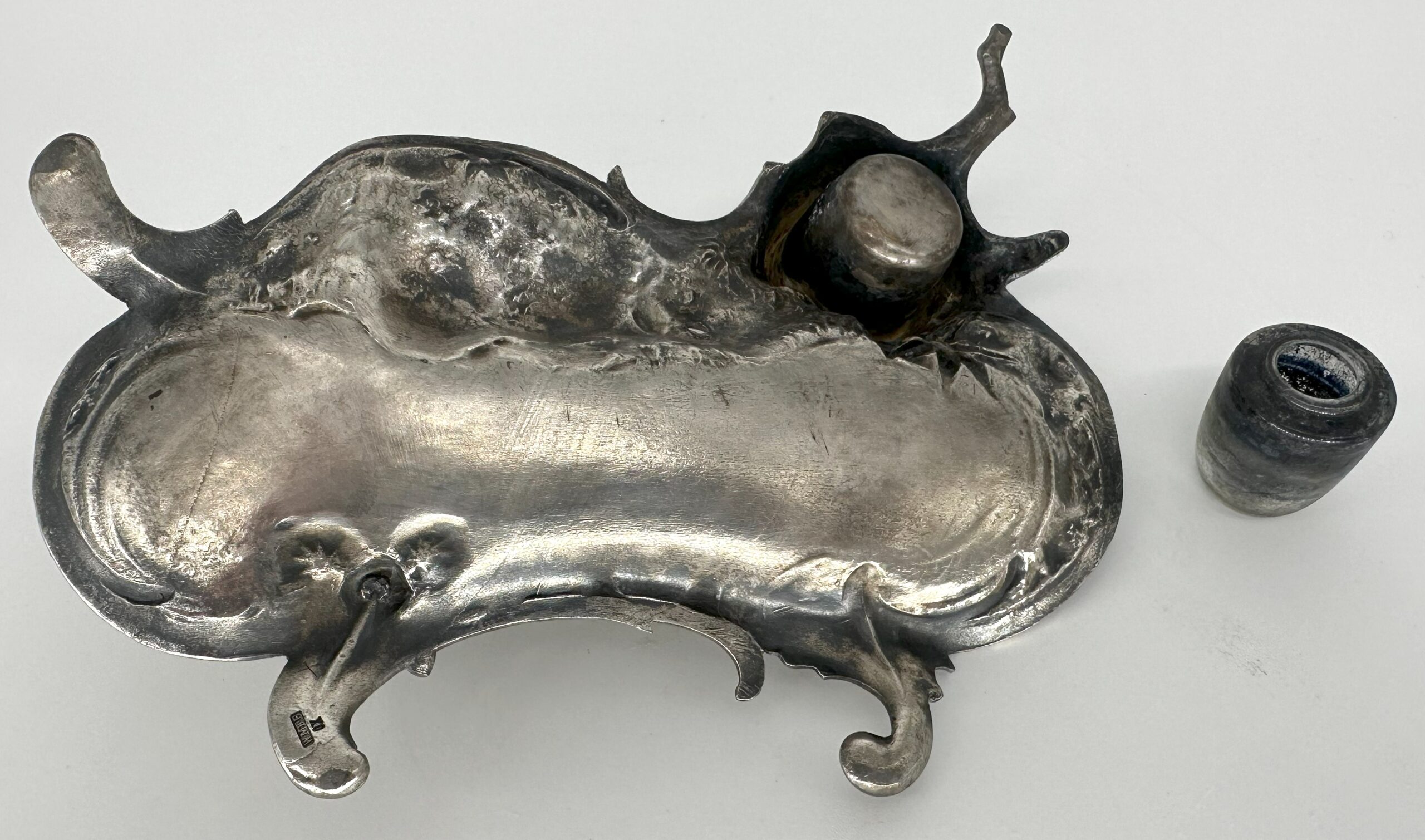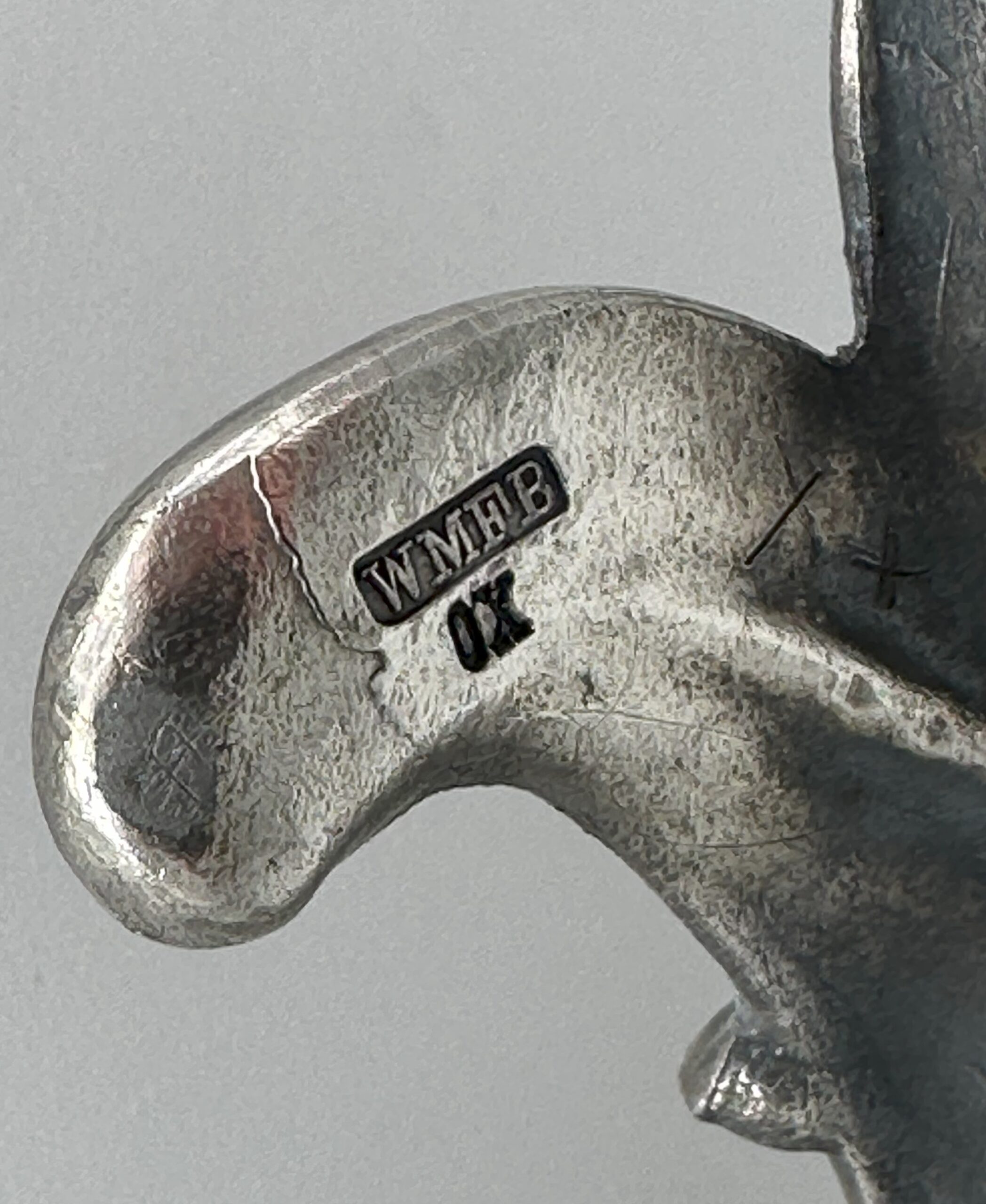
Dwarf by a Pond
| Categories | Figural - Mythology; Literature; Religion; Fictional |
| Type | Dwarf / Gnome |
| Material | Silverplate |
| Markings | WMFB OX |
| Manufacturer | WMF |
| Origin | Germany |
| Date or Era | circa 1890 |
| Measuring | 8" long, 6 ¾” wide, 3 ¼” tall |
A dwarf (or gnome) stands by a pond, holding a stick to the water. The dwarf’s outfit is detailed, from the hat to his top completed with the scarf he is wearing around his neck. Next to the dwarf is a tree stump (the top is a lid) that houses the inkwell. The pond is decorated with flowers, grass, and a leafy branch. The bottom of the inkwell is marked: WMFB OX.
WMF – Wurttenbergische Metallwarenfabrik History:
In 1853 Daniel Straub, a miller from Geislingen, joined forces with the Schwei Brothers to form the “Metallwarenfabrik Straub & Schweizer” in Geislingen . This was the second company to be founded by Straub – previously in 1850, from the nucleus of a small repair workshop, which he had set up to work on the construction of Geislingen’s famous railway incline, he had founded the Machinenfabrik Geislingen. This company was involved mainly in manufacturing mill turbines and traded throughout Europe.
As early as 1862, the young company distinguished itself by winning a gold medal at the World Exhibition in London. In1866, following the departure of the brothers Louis and Friedrich Schweizer, the company was renamed Straub & Sohn (Straub & Son). The company showroom, built in 1868 in Berlin, gradually evolved to become the company’s first retail outlet. Three years later, the company was already employing 60 workers. By 1880, the number of employees had grown to approximately 200 and the company was already producing 960 different items. 1880 saw the merger between Straub & Sohn and “Ritter & Co.”, Esslingen, to form a public limited company under the name of Wurttembergische Metallwarenfabrik. At the time of the merger, Ritter & Co.’s Esslingen factory was already using the electroplating method of silver plating and had the more modern production facilities at its disposal. Straub’s company on the other hand, was the more profitable of the two.
Estimated value: $100
Content disclaimer. The information posted is the owner’s best knowledge and may not have been vetted by the SOIC. We welcome comments, corrections, and additions, working to make our website information comprehensive and accurate.
Join the Society of Inkwell Collectors (SOIC) – it’s free!
Founded in 1981 as a non-profit organization,
we are documenting inkwells (and accessories).
We’re here to help and inform!
